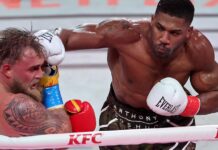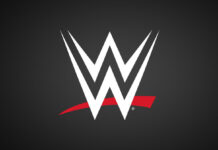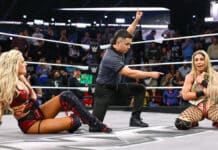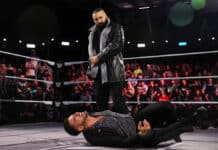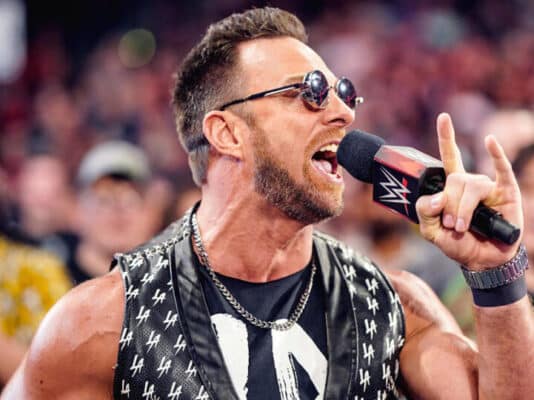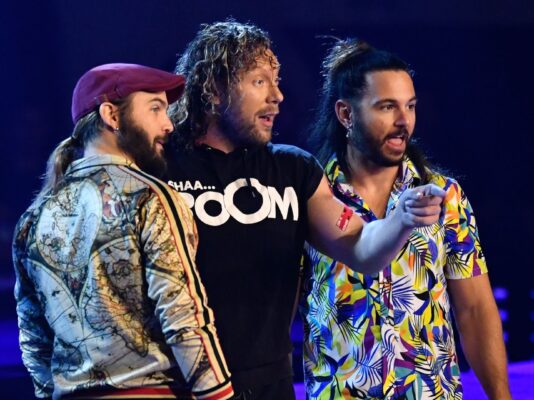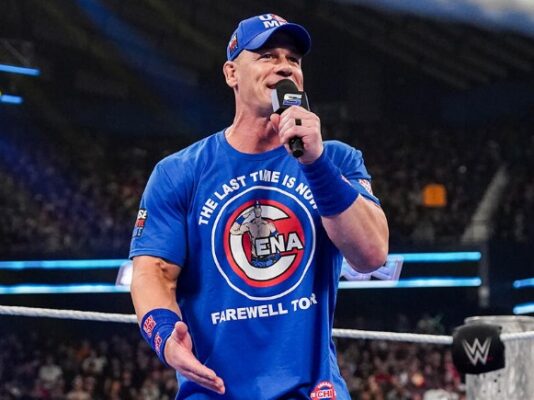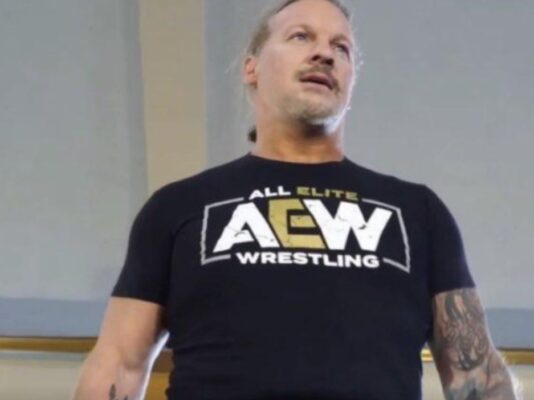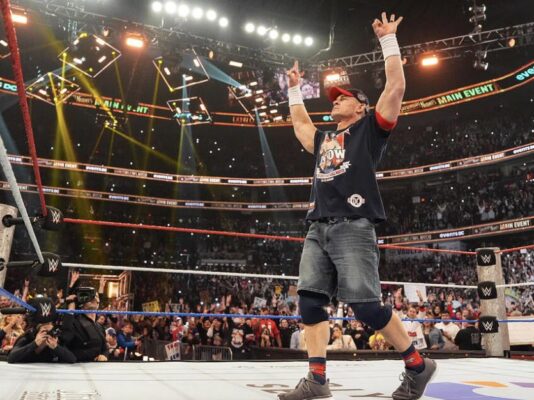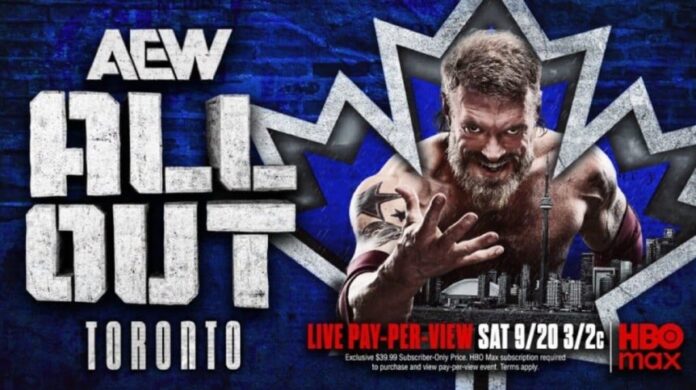
The well-known counter programming attempt from WWE, which moved its new ESPN deal up a few months and added a premium live event to the calendar to be able to run show against All Elite Wrestling, put an extra spotlight on this past weekend. Truthfully, as I’d written about when Wrestlepalooza was originally announced, the effect would be minimal in terms of the buy rate for the AEW broadcast, but if WWE could have the more newsworthy event and thus minimize the importance of the All Elite PPV is possible. That’s why it was somewhat puzzling as to why Tony Khan made the decision to move the event in Toronto to the afternoon because the core fan base that is willing to spend $50 on an All Elite pay-per-view simply aren’t the demographic that will be swayed away from making that purchase to spend $30 on an ESPN subscription to watch another Brock Lesnar vs. John Cena match.
With both shows in the books, I don’t think the counter programming or the efforts to avoid it with the AEW show in the afternoon made any measurable difference, in either the numbers or in terms of perception. The WWE show was exactly what it was going to be with the spectacle of the debut on the ESPN platform, and All Elite was going to be its usual overbooked car crash style of presentation that the viewing audience was going to see regardless of if the WWE ran an event the same day or not. You can take either of those as a positive or a negative, depending on perspective. The one possible exception might’ve been the decision to stretch the show to the five-hour mark to be able to put the Hangman Page/Kyle Fletcher main event in the ring at the same time as the Brock/Cena opener since it was specifically announced what match would kickoff Wrestlepalooza. At the same time, it’s not uncommon for AEW pay-per-view to run a ridiculous five or six hours anyway so it’s equally as possible that it was a mere coincidence.
Ironically, the first three matches on the card had somewhat of a measured approach to them, and it should be no surprise that the majority of the performers involved in that portion of the card are former WWE stars. The Adam Copeland and Christian vs. FTR tag bout opened the show and it was a solid tag bout. These four athletes knew how to work the crowd to maximize the hometown advantage and they got the most out of what they did in this segment. I’m not sure this needed twenty minutes, but it’s reflective of Tony’s cut and paste format to pay-per-views. Copeland and Christian got the victory, but the majority of the business was done in the post-match angle. On one hand, it shouldn’t be surprising that the former Beth Phoenix made an appearance to even the odds, considering that Copeland works for the company, but on the other hand, I didn’t think that they’d use her on the same weekend that AJ Lee returned to the ring because it just made the whole thing look like a flimsy attempt to copy something that got some buzz in the bigger company. Taking into account that FTR landed the spike pile driver on Beth, it’s an indication that this feud will continue, which is fine, as it’s some of the more logical work that Copeland has done in his AEW tenure.
Eddie Kingston’s return to the ring after almost a year and a half on the injured list didn’t get nearly as much of a promotional push as it should’ve based on how over he still is with the audience. The challenge from Big Bill was made on Collision, the B-show that draws a fraction of the decreased Dynamite ratings. That being said, this was a very good bout that showcased a physical and hard-hitting segment that made it stand out from the rest of the 10-match card. The only major flaw was that Kingston completely missed on the back fist that even Tony Schiavone mentioned on commentary that led to the finish so it was a flat conclusion. Big Bill looked like a star in this contest and the argument could be made that he should be in a better spot in the organization, and yes, the same thing could be said about many performers on the bloated roster. The biggest takeaway was the fact that Eddie was on the shelf for such an extended period of time and was still one of the most over performers on the entire event. Eddie Kingston is one of my favorite wrestlers, but I can honestly say that with how over he is with the fans, AEW should run with him while they can, especially because he’s probably at the latter stages of his career after the leg injury.
The MJF/Mark Briscoe bout could’ve been the blood and guts match that was the hardcore segment on the card. Sure, it probably wasn’t a storyline that needed a gimmick match at this point, but that can be said about most AEW gimmick matches so it just goes with the Tony Khan territory. These two worked hard and took some brutal bumps on the thumbtacks. Most of the table spots weren’t necessarily, specifically because of what else was booked later in the night, but again overbooking is a part of the Tony Khan philosophy. Mark Briscoe got the win after a Jay Driller on the tacks, and it looks like MJF is going to take more time off. I understand that one of the perks of working for Tony Khan is that performers can more or less decide if and when they want to show up, but it’s difficult to recapture momentum when wrestlers leave for months on several different occasions.
When the six man tag team match started, it looked like it was going to be a glorified squash, but it built to a decent tag match as The Demand got in a level of offense that made them look like contenders rather than just the opponents to put over the bigger stars. The action that spilled onto the outside probably wasn’t needed since that’s where almost every match ended up at some point, but at least The Demand got the win so there’s some attempt to make them look like credible performers in the company rather than a trio with no direction. Considering that he’s not a full-time wrestler, it made sense that MVP took the pin.
The TBS women’s title match was very well done in terms of the quality of the performance and the athleticism involved, but the bottom line is, when nobody in the building believes that it’s possible that Riho was going to win the belt, there just isn’t the level of drama to go with the type of spots that they did in the match. As mentioned earlier, it’s tough to recapture momentum when wrestlers disappear for an extended period of time. Riho only had a handful of appearances in AEW in the past few years so the audience knows that she’s not going to win the championship. Despite the attempt of making Mercedes look like Ultimo Dragon being totally silly, it’s clear that she’s not going to drop the title unless there’s a long term build of an extensive rivalry behind it. The fans knew that Riho is only there for a cameo appearance before she goes back to Japan until next year. Mercedes retained the title.
Kazuchika Okada defeated Konosuke Takeshita and Máscara Dorada to retain the Unified title. This was a 20-minute dazzling spot fest and it was a high quality representation of the brand. This segment was somewhat disjointed as they tried to balance a high spot match with the narrative of the dissension between the two members of the Don Callis stable, but overall, this was a really entertaining contest. If Tony Khan booked more of this with less of everything else, the quality of the events would probably be more consistent.
This is where the presentation of the show went into full slapstick mode and basically indulged almost every bad habit associated with the AEW brand. I could parse details of the individual matches of the rest of the card, but when it’s clear that the booker didn’t parse details to script it then there’s no reason for the analysis to get more in-depth than that. The coffin match was the blood and guts segment of the show, the problem was that there was already a blood and guts segment on the card so it’s diminishing returns one way or the other. The bout was sloppy and had car crash bumps when there were going to be car crash bumps later in the show. At one point, even the announcers noticed that Jon Moxley was reaching in his pocket for a blade to use on his ear. Moxley got the win when Pac returned, but taking into account that Pac has returned several times, does it really matter? He’s a talented guy, but he’s away more often than he’s on the show so why should the audience care? Furthermore, there was a backstage segment where Darby Allin escape the coffin before he set Moxley on fire in the body bag. First, if Darby is fine less than an hour after he was power bombed from the ring onto the lid of the coffin, did any of the risk they took in the match actually matter? More importantly, when setting someone on fire is the backstage spot, what exactly are they realistically going to do next to continue the feud? Again, it’s just diminishing returns, which ultimately leads to underwhelming content.
The women’s four way match for the championship was fine for what it was, and it was good to see that Kris Statlander won the championship since she’s one of the best female workers on the roster, but this is a scenario where everything gets lost in the shuffle. There was already a three way match before this and then there was a four tag team ladder match after this so how memorable was this 10-minute women’s match by the time the show went off the air? Speaking of the four tag team ladder match, it was chaos just for the sake of chaos, and that can be said for most of this pay-per-view. When everything is chaos, nothing is chaos and thus the effectiveness is completely diluted. So, the tag team ladder match had all the nonsensical risks and table bumps that you’d expect from it. What does any of it translate to? You can’t say that fans will be talking about it for years because stuff like this happens on every AEW pay-per-view to the point that everything blends together. It actually takes away from the legitimate risks that the performers take in these types of matches. But hey, at least Meltzer is going to give it at least five stars in The Wrestling Observer newsletter. When booking a card with a variety of gimmick matches or even something as basic as too many matches on the line-up, it takes a precise approach to try to spotlight the positives and hide the negatives in an effort to get the best show possible from it. Tony Khan chops a lot of wood because he uses an axe, not a scalpel in his booking approach to these shows. Brody King and Bandido retained the belts. Post-match, Jack Perry returned to almost no reaction to attack The Young Bucks before Luchasaurus made the save. Jack Perry is aloof and one more than one occasion proved that he doesn’t understand the wrestling business so it’s doubtful that reuniting a team from five years ago will truly increase his value or lack thereof to the company.
The main event was 40 minutes, and quite frankly, there was no reason for it to be more than half of that time. Keep in mind, this was a thrown together less than two weeks before this show, it wasn’t build up as some Tokyo Dome clash. Fletcher and Page are quality in-ring performers, but after nearly four and a half hours of every bump, high spot, blood, and tables throughout the show, what was there left for them to do, let alone for 40 minutes? There were already tables used in a few other matches so when Page spiked Fletcher off the apron through the table, did it really matter? This wasn’t a subpar contest, it had very impressive athleticism and the effort was there, but this scenario put in this spot didn’t need most of what they did during the segment. Adam Page retained with the buckshot lariat, but I’m not sure if the win did anything to boost his stock as champion. There’s another All Elite Wrestling pay-per-view in just four weeks so you can expect another overbooked card next month.
What do you think? Share your thoughts, opinions, feedback, and anything else that was raised on Twitter @PWMania and Facebook.com/PWMania.
Until next week
-Jim LaMotta
Email [email protected] | You can follow me on Instagram, Facebook, & Threads @jimlamotta89

